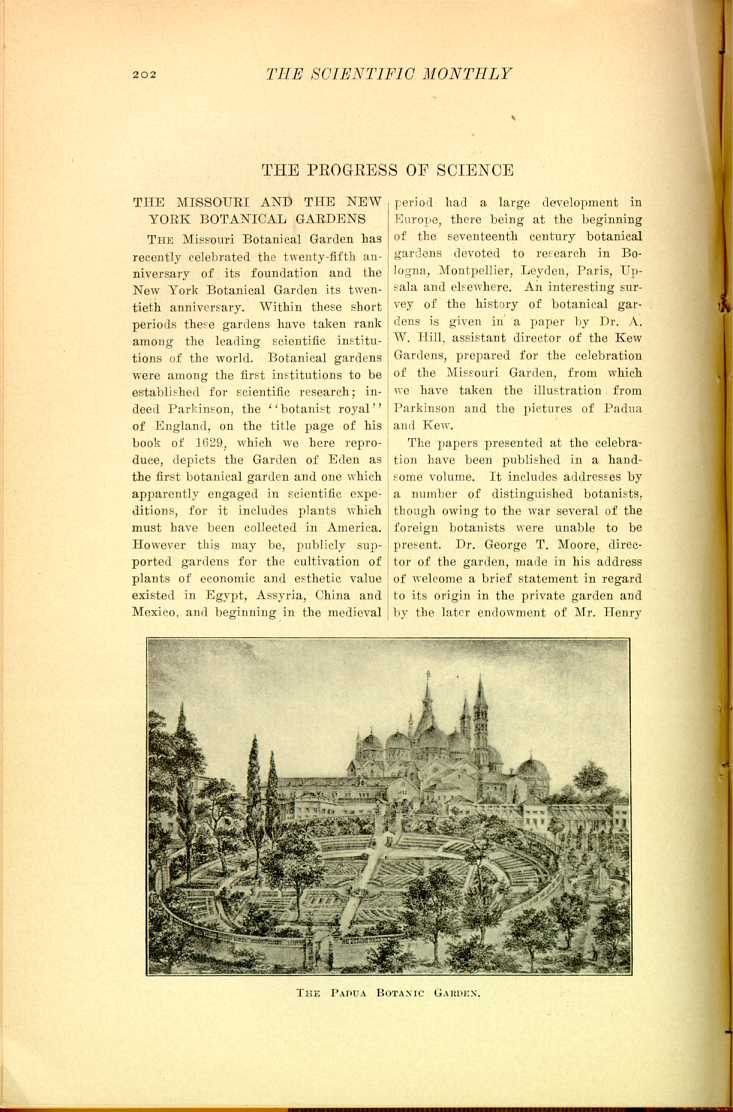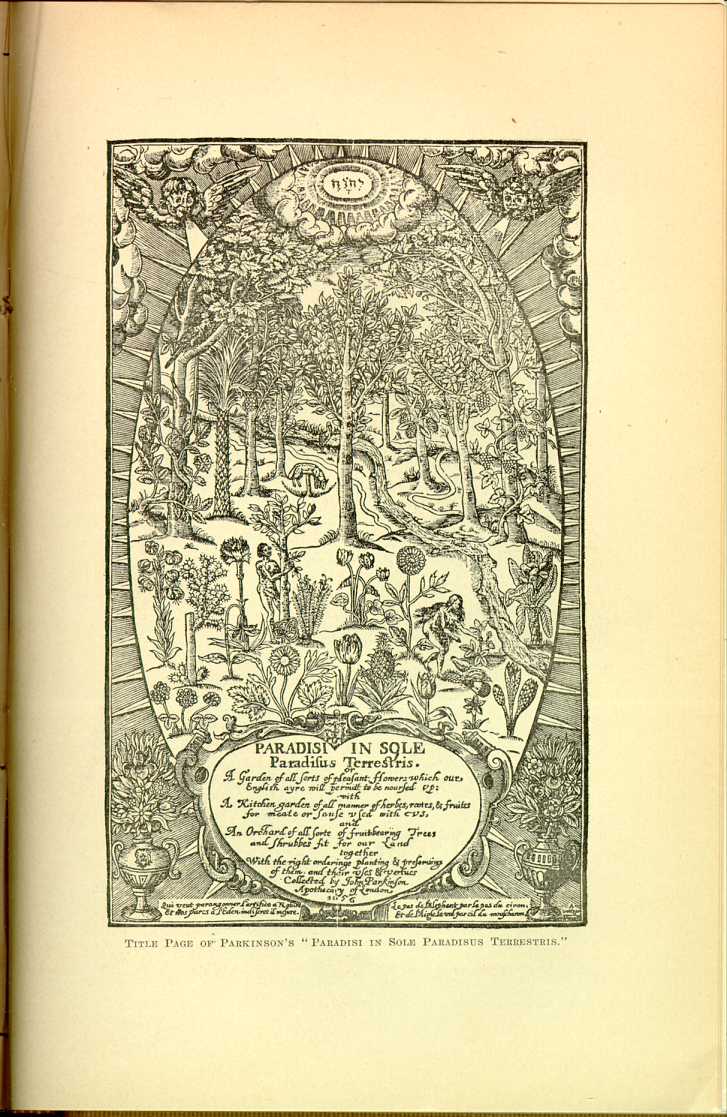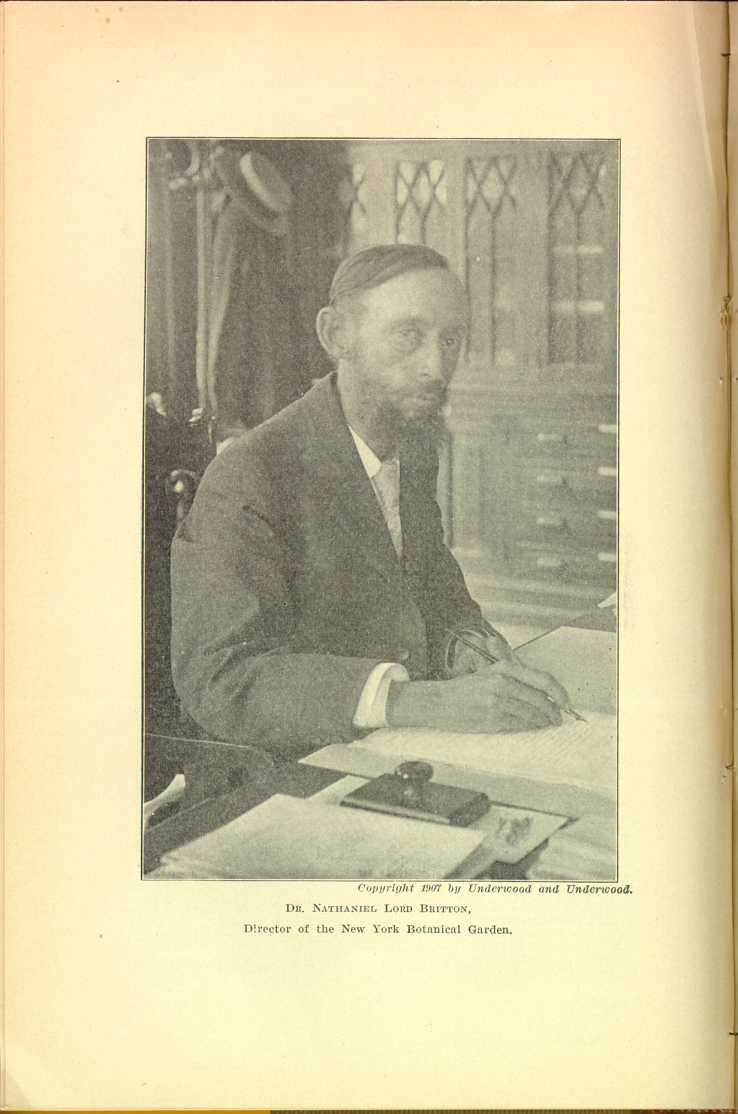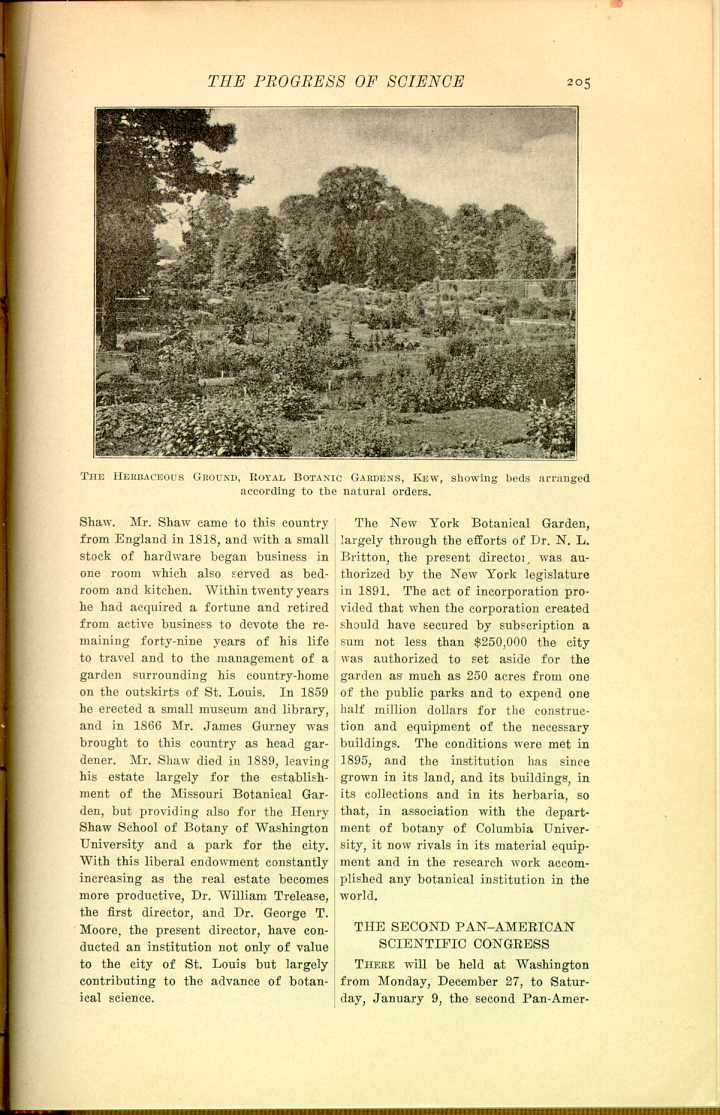| The Scientific Monthly | ||
THE MISSOURI AND THE NEW
YORK BOTANICAL GARDENS
THE Missouri Botanical Garden has recently celebrated the twenty-fifth anniversary of its foundation and the New York Botanical Garden its twentieth anniversary. Within these short periods these gardens have taken rank among the leading scientific institutions of the world. Botanical gardens were among the first institutions to be established for scientific research; indeed Parkinson, the "botanist royal'' of England, on the title page of his book of 1629, which we here reproduce, depicts the Garden of Eden as the first botanical garden and one which apparently engaged in scientific expeditions, for it includes plants which must have been collected in America. However this may be, publicly supported gardens for the cultivation of plants of economic and esthetic value existed in Egypt, Assyria, China and Mexico and beginning in the medieval period had a large development in Europe there being at the beginning of the seventeenth century botanical gardens devoted to research in Bologna, Montpellier, Leyden, Paris, Upsala and elsewhere. An interesting survey of the history of botanical gardens is given in a paper by Dr. A W. Hill assistant director of the Kew Gardens, prepared for the celebration of the Missouri Garden, from which we have taken the illustration from Parkinson and the pictures of Padua and Kew.
The papers presented at the celebration
have been published in a handsome
volume. It includes addresses by
a number of distinguished botanists,
though owing to the war several of the
foreign botanists were unable to be
present. Dr George T. Moore, director
of the garden, made in his address
of welcome a brief statement in regard
to its origin in the private garden and
by the later endowment of Mr. Henry

THE PADUA BOTANIC GARDEN.
[Description: Illustration of botanical gardens (in the foreground) and a
castle (in the background).]

TITLE PAGE OF PARKINSON'S "PARADISI IN SOLE PARADISUS TERRESTRIS.''
[Description: Illustration of the title page of Parkinson's "Paradisi in Sole Paradisus Terrestris," which shows an Edenic garden with a man and woman tending it.]
Copyright 1907 by Underwood and Underwood.
DR. NATHANIEL LORD BRITTON,
Director of the New York Botanical Garden.
[Description: Photograph of a man seated and writing at a desk. A coat and
hat hang from a coat-rack in the background.]

THE HERBACEOUS GROUND, ROYAL BOTANIC GARDENS, KEW, showing beds arranged according to the natural orders.
[Description: Photograph of the Royal Botanic Gardens, Kew. A number of flower beds can be seen in the foreground. Larger trees cover the left side and background.]The New York Botanical Garden, largely through the efforts of Dr. N. L. Britton, the present director was authorized by the New York legislature in 1891. The act of incorporation provided that when the corporation created should have secured by subscription a sum not less than $250,000 the city was authorized to set aside for the garden as much as 250 acres from one of the public parks and to expend one half million dollars for the construction and equipment of the necessary buildings. The conditions were met in 1895, and the institution has since grown in its land, and its buildings, in its collections and in its herbaria, so that, in association with the department of botany of Columbia University, it now rivals in its material equipment and in the research work accomplished any botanical institution in the world.
| The Scientific Monthly | ||